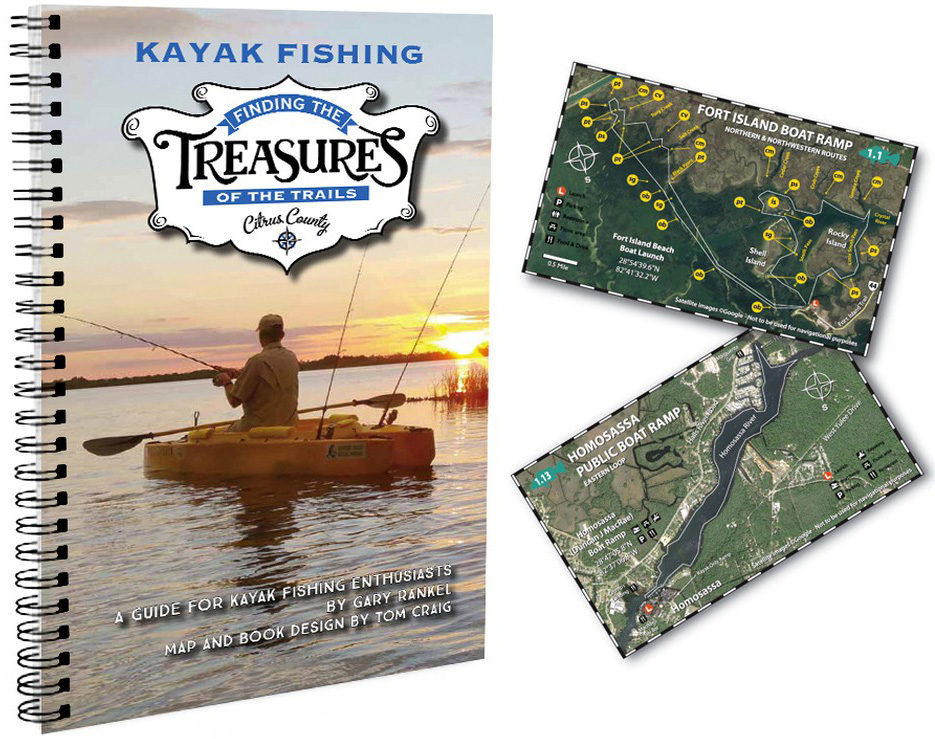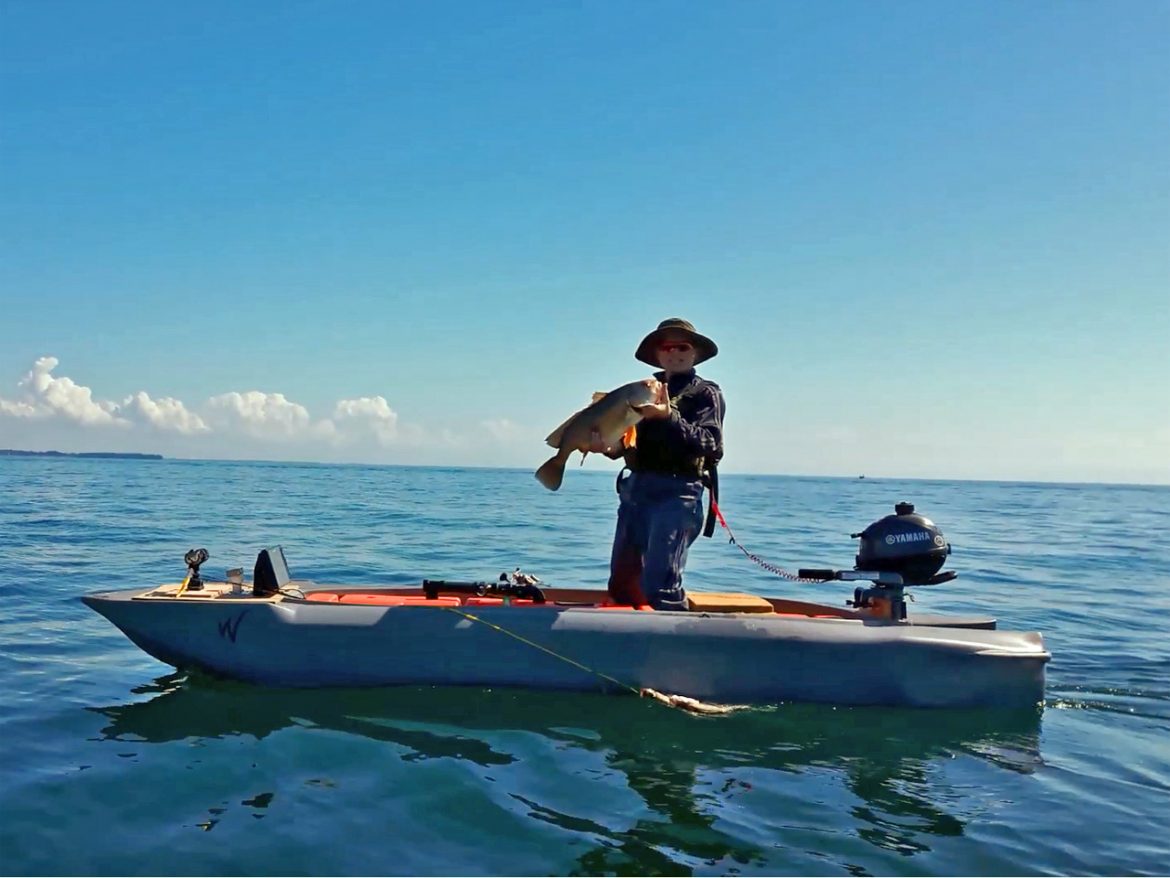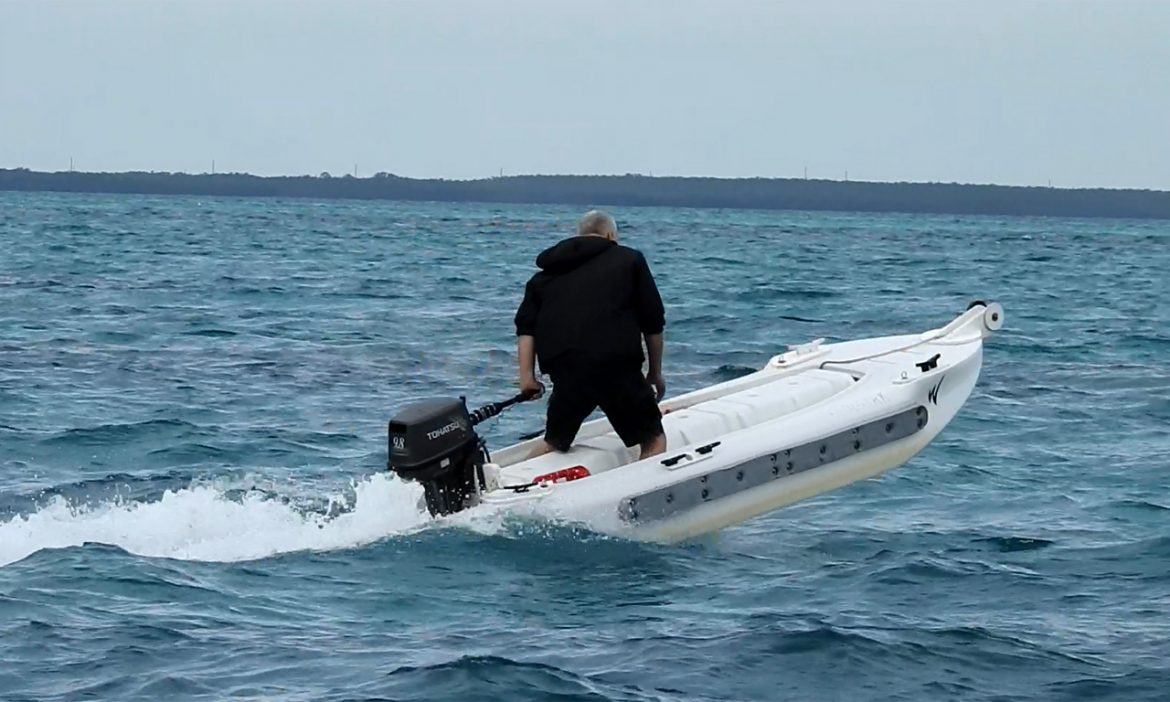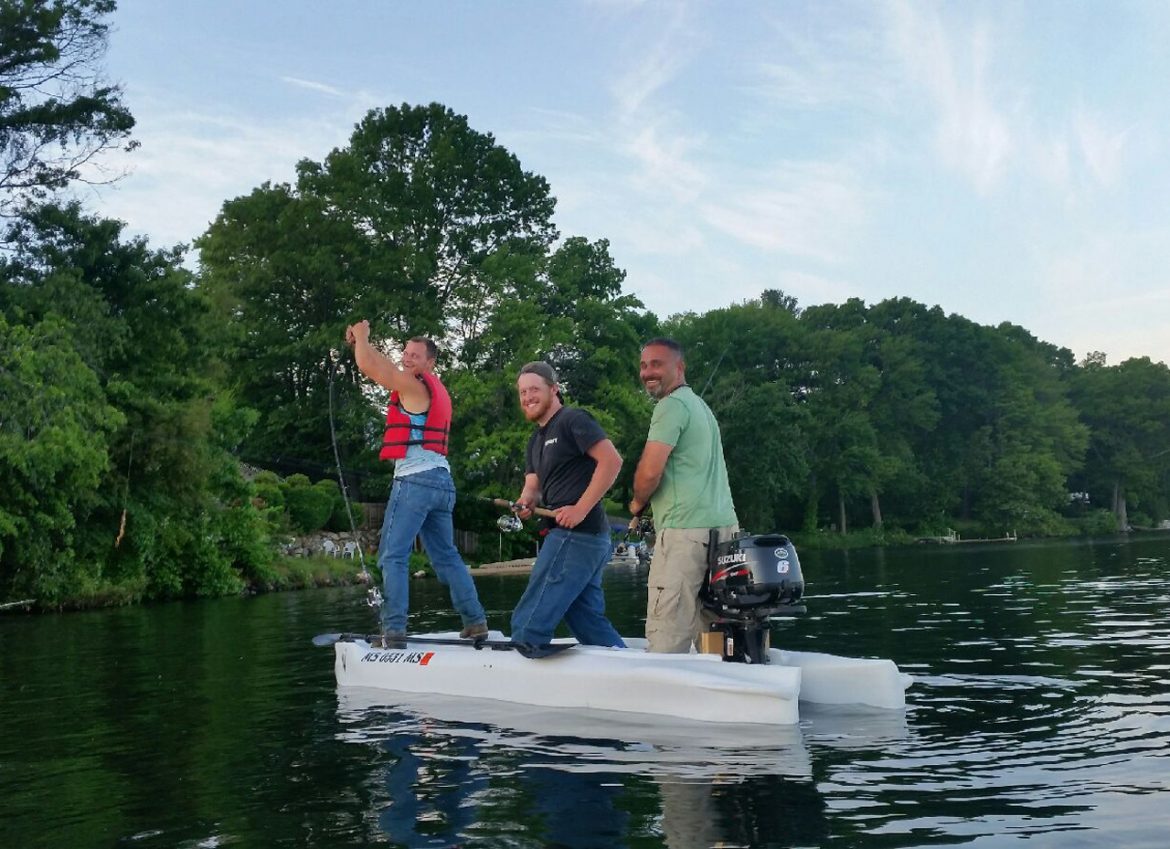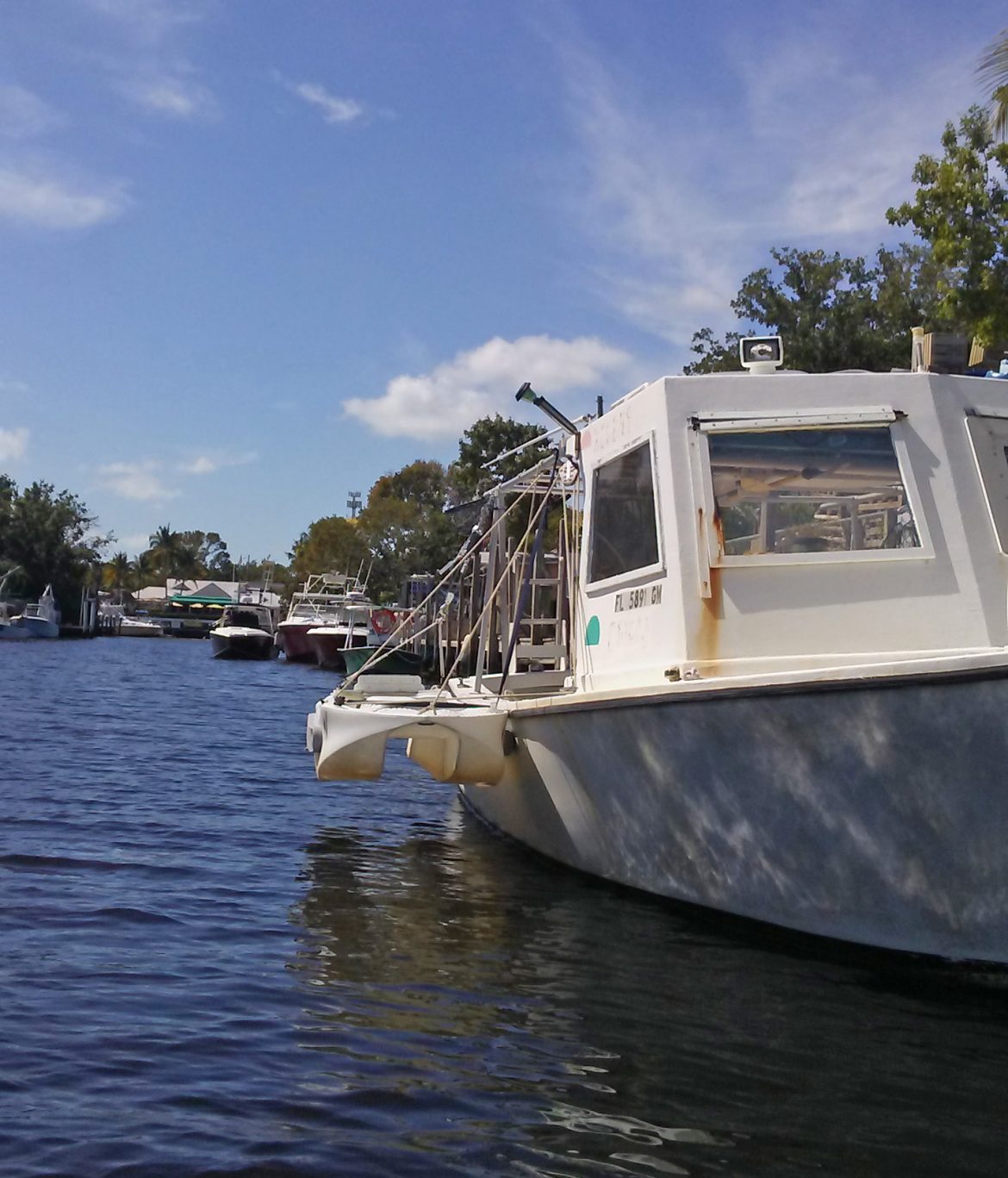Gary Rankel has just published a guide to kayak fishing in the heart of Florida’s Nature Coast: “Finding the Treasures of the Trails – Kayak Fishing Citrus County” (https://squareup.com/store/buendia-press).
The tragic deterioration of water quality and associated sport fisheries throughout much of Florida has prompted a mini migration of anglers to the Nature Coast looking to paddle their kayaks in the relatively pristine lakes, rivers and inshore area. Ditto for central Florida’s burgeoning “boomer” demographic seeking something more adventurous.
The book’s how-to section provides a comprehensive review of all things kayak fishing, including a few tips, tricks and techniques you may not have seen before. The where-to-paddle-and-fish section contains 27 color maps depicting launch sites, fishing routes and hotspots for targeting redfish, snook and seatrout in and around the Crystal, Homosassa, Chassahowitzka and Withlacoochee Rivers bordering the Gulf of Mexico, as well as largemouth bass and other freshwater species in the Tsala Apopka Chain of Lakes.
Anglers who’ve paddled around the marsh a time or two and think they know it all, as well as newbies to the sport, no matter where they dip their paddles, should find the book educational and enjoyable. So should manatee watchers, scallop snorkelers and other tourists to the Nature Coast looking to broaden their overall outdoor recreation experience.
Gary’s new book may be ordered online at https://squareup.com/store/buendia-press.
Month: December 2018
Big lake, small boat, big fish
This year for me was the best fishing year in my entire life, and that is because I own the S4 coupled with the gas motor.
By Pyt Rotary
Ontario, Canada
I own a Wavewalk S4 kayak motorized with an electric Minnkota of 80Lb thrust 24V, and a Yamaha 2.5Hp 4 stroke gas outboard. I fish and have fun with it almost every week.
I use it mostly for fishing and trolling in big lakes – lake Ontario, lake Erie, Georgian Bay and lake Simcoe.
Sometimes I fish with it in rivers and swamps.
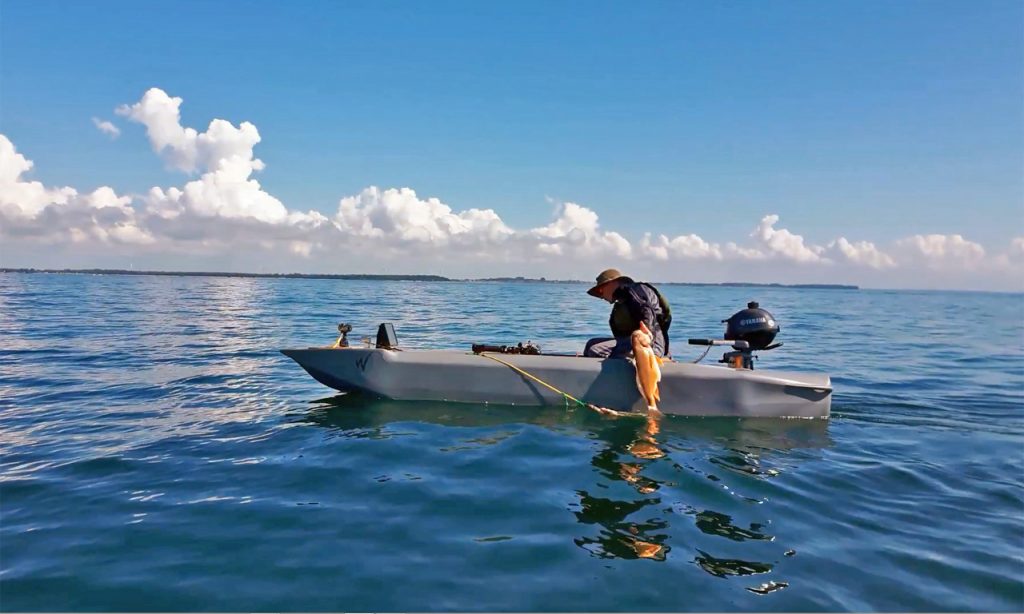
This year for me was the best fishing year in my entire life, and that is because I own the S4 coupled with the gas motor. I had a Honda 2.3Hp, nice and light but too weak and not great for trolling on big lakes because it has a centrifugal clutch. I sold that and I got a Honda 4Hp 4 stroke, great motor but too heavy (30+kg). Sold that one and got a Yamaha 2.5Hp / 4 stroke, great motor, has Drive and Neutral but some time I need more power. Next motor I will buy will be a Tohatsu 3.5Hp. This one should be the best option for me:
1) weight under 20kg
2) best trolling speed in idle mode on drive
3) give me more torque when I need to go 10 miles inside Ontario/Erie lake.
2018 was the year when I got my best fishing experience, lots of fish caught (salmon, walleye, pike, trout). I do fish mostly by trolling andjigging. I never got so many fish, and that is because now I can access and cover a lot more water fast and cheap.
Next year I will buy the new Tohatsu and I will experiment with a Scotty downrigger. The downrigger will even put more fish in my boat than ever.
Due the nature of S4 I can launch whenever I want.
Really funny to see boats in the morning in queue waiting in line and me just bypassing going on sandy beach and launching. Also I have numerous places where I have access but no boats can go.
I do car port my S4 in a Dodge Caravan 2004 (the short version) by sliding the S4 inside my mini-van.
Tight lines and have a great fishing year in 2019.
All the best from Canada, Ontario.
Seaworthy portable microskiff
What is a seaworthy boat?
A boat is deemed seaworthy if it is built and outfitted for a voyage at sea. By extension, when small boats are concerned, going on big lakes requires a seaworthy boat as well. A portable boat can be easily carried or moved, especially because of being lighter and smaller than other boats. Skiffs are flat bottomed boats designed for fishing flat water. Micro skiffs (microskiff) are smaller skiffs designed to do the same. These boats draft less than other boats that are made for fishing in deep water, and offshore. When used on flat water, skiffs and micro skiffs are relatively stable for their size, but they don’t excel when seaworthiness is concerned. Some skiffs and microskiffs can handle waves better than others, due to a somehow different form of their hulls called Shallow V Hull that feels less stable on flat water. But going with these boats through choppy water, let alone rough water, is uncomfortable at best, as typically, the passengers feel unstable, and get tossed around. This is to say that as a general rule, boats that are made primarily for going on flat water are not among the most seaworthy.
Portable microskiff
Portable microskiffs are smaller than the typical microskiff, and as such they are less seaworthy. In order for a boat to be portable, it must be small and lightweight enough to be car-topped, and carried to the beach either by dragging it on the ground, or with a lightweight wheel cart. Typically, microskiffs that offer these advantages are not full fledged boats – They are boards with little or no free board, whose decks get washed by water and spray even when they go in mild chop. The only full-fledged portable microskiffs are the Wavewalk 700 and Wavewalk S4 that offer sufficient free board to offer reasonable protection to their passengers and gear, as well as sufficient stability and balancing capabilities when going in rough water.
Microskiffs that are portable and seaworthy
Despite their similar catamaran design that’s based on Wavewalk’s patented invention, the W700 and S4 are two different micro skiffs in terms of performance and capabilities.
The Wavewalk 720
The W720 can be described as a hybrid kayak-microskiff. It is extremely stable even in comparison to the biggest ordinary fishing kayaks, and it paddles very well with a crew of one or two, and up to three medium size paddlers. It can be driven with an outboard motor of up to 4.5 HP, at speeds over 10 mph. The W700 offers stand up paddling and fishing to up to two anglers, and its on board storage capacity is greater than the storage offered by any sit-in or SOT kayak. The W700’s light weight (80 lbs) makes it easy to carry over long distances and rough terrain, including rocks and deep sand. The W700 also works perfectly well as a canoe, namely with single-blade paddles.
The S4 microskiff
The S4 is more stable and more seaworthy than the W700, its load capacity (payload) is greater, and it has more room for passengers and gear. On top of this, the S4 can be driven with much bigger and more powerful motors, at sustained speeds of 17 mph (with a 10 HP outboard). The S4 weighs 20 lbs more than the W700, and it is likely to be outfitted with a more powerful, and therefore heavier motor, it is less easy to carry over rough terrain and deep sand. This said, the S4 is a car-top boat that one guy can handle without a problem. The S4 also works well in a paddling mode, with both kayak and canoe paddles.
And if you liked the feeling of driving an S4 in the open sea, in waves, here is a video that will show you what it feels like to drive this unique microskiff at high speed in tight and winding mangrove tunnels –
The performance of the S4 is in rough water is most impressive, even compared to inflatable dinghies that are designed primarily for going in rough seas. The S4 easily handles waves of up to 4 ft, while its driver and passengers ride its saddle in comfort and confidence stemming from the fact that they can balance themselves easily and intuitively, in the most effective way, being supported by their own legs and a large size hull on each side. The saddle in Wavewalk’s micro skiffs is of similar size and dimensions as the saddle featuring in large-size models of personal watercraft (PWC), often referred to as jet-skis. Similarly to jet skis, the driver of an S4 can drive it standing up, even in choppy water.
The video below shows a Wavewalk S4 user downloading it from his SUV, dragging it over a rocky beach, and launching it in a “rock garden” –
Similarly to micro skiffs skiffs, the S4 features a front deck that an angler can stand on and cast, although probably not in the presence of waves.
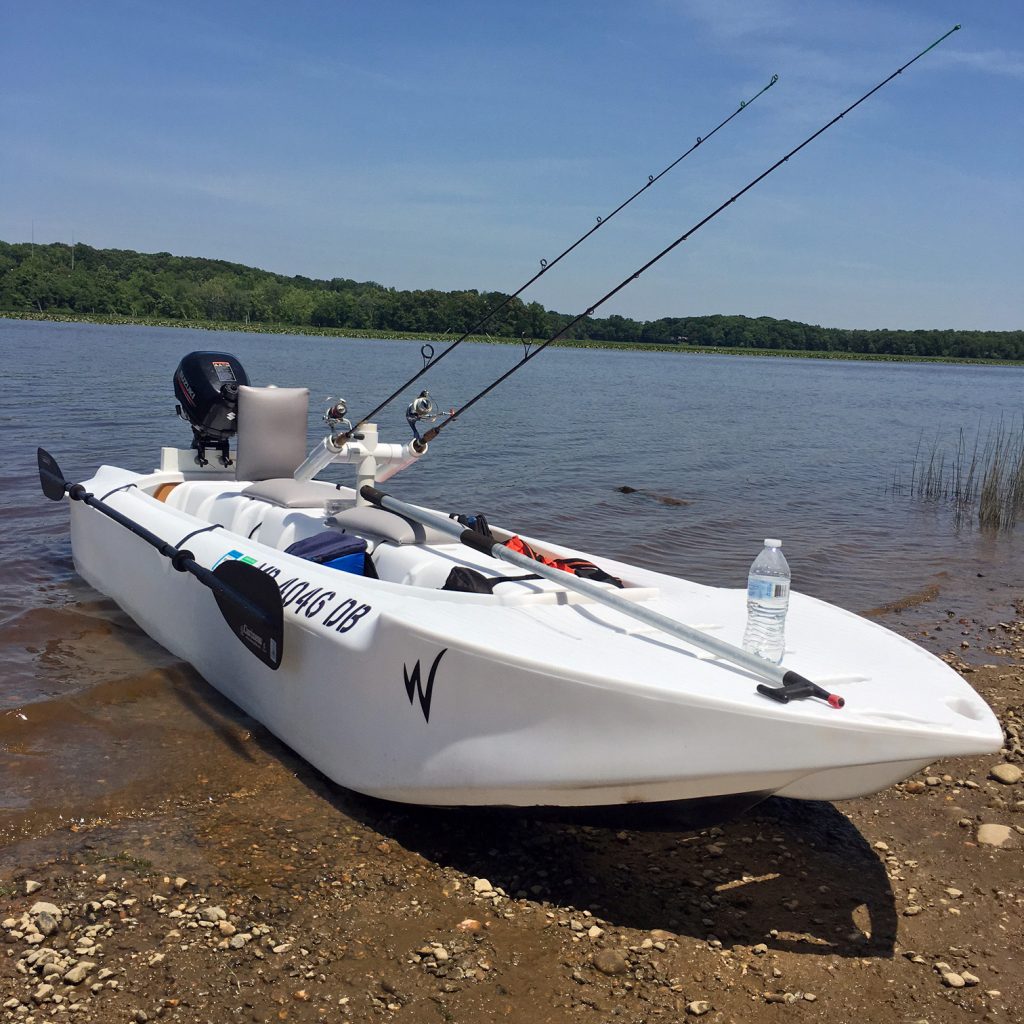
The S4 can be outfitted with accessories such as a wheel cart that can be carried on board, and a large-size, detachable spray shield that protects the front passenger from being sprayed when the boat goes in waves at high speed. The S4 micro skiff is more stable than other skiffs its size, and unlike typical skiffs, it is not made from fiberglass but from Polyethylene, which is a resilient and more durable material. This makes it possible to move the S4 over rugged terrain, rocks and various obstacles.
Even more versatility – food for thought
Skiffs and micro skiffs are designed for flats fishing. The problem with these fisheries is twofold – The first challenge is that in low tide, the water can be too shallow even for a micro skiff to move in it, and the propeller is the lowest point in the boat that determines its actual draft. The second problem is vegetation that can get entangled in the outboard’s propeller. In this context, on top of its being a seaworthy boat, the S4 works well with a surface drive, also known as a mud motor. These motors work at sea, and they outperform regular outboards in shallow water, muddy water, and water where much vegetation grows. For some anglers, the S4 offers top performance and extreme versatility as a seaworthy microskiff, as well as an all-terrain and all-water boat.
SOT kayak stability, or lack thereof
Why do you need a stable kayak?
Simply, your kayak’s stability is key to your Safety, Comfort, and Successful Fishing. Without it, you could end up swimming, or worse – drowned, and if you happen to lose balance, you could also lose some precious gear that would slide down from the deck and into the water, never to be seen again. Any stability issue that you have to deal with while fishing automatically draws mental and physical resources from you, and mobilizes them for the task of keeping you balanced, and your kayak level. This continuous effort affects muscle tension in your legs, your back and your shoulders, and it reduces your casting performance, as well as your ability to turn and to focus. But most importantly, the feeling of instability leads to discomfort, and this hurts your well being. In other words, fishing out of unstable or insufficiently stable kayak is not fun.
Under such conditions, your ability to land big and powerful fish is significantly reduced, and you can’t expect to be very successful in your fishing trip.
Now you know the reason why despite the fact that kayak fishing looks so easy, simple and fun, and most kayaks are cheaper and easier to transport than boats, the number of kayak anglers has stayed stable in recent years, after years of growth. Many people have tried fishing out of kayaks, but the combined effect of instability, wetness, discomfort and back pain, and not enough catching has led many of them to quick this sport, or outdoor activity.
What’s the most popular fishing kayak?
The primary concern of any angler who fishes out of kayak is stability, of course. The inherent poor stability that kayaks offer make it the first and foremost concern, which is why fishing kayaks are typically much wider and often bigger than kayaks used for Recreation, Touring, and obviously speed competition. The fear of capsizing their kayaks and the potentially disastrous results of such event drives kayak fishermen toward sit-on-top (SOT) kayaks, and therefore, they are more popular than sit-in kayaks.
Are SOT kayaks more stable?
No, they are not. In fact between two ordinary (mono-hull) kayaks of identical size, namely the same width, length, and overall buoyancy, a sit-in kayak will always feel ore stable than a SOT kayak. Why is that? Simply because the sit-in kayak offers its user to sit lower than the SOT kayak, and the lower you are the stable you are. Therefore, SOT kayaks are the least stable kayaks out there. If this is hard for the reader to understand, they should try standing on the steps of a ladder, and once they start climbing up, they will feel the decrease in the ladder’s stability. Now you know why the typical SOT fishing kayak is so wide and so huge – It’s because if it wasn’t that big, fishing from its deck would be limited to children and very small and lightweight people. And you you also know why pictures that show anglers fishing standing on the deck of SOT kayaks are typically not very big, and if they appear to be big, or at least just tall, the image appears to have been doctored…
In this context, it’s interesting to observe that people who fish from boats are frequently seen standing, while people who fish from kayaks rarely stand up in them. The reason for this is stability, or lack thereof in kayaks.
What’s the problem with big SOT fishing kayaks?
The problem that users of big SOT fishing kayaks users face is twofold – First, these behemoths are are to transport and carry, and the biggest can hardly be moved even on land. Second, these huge kayaks don’t paddle well – They are slow, hard to move, they track poorly, and they are mostly for short trips on flat water. People who are not in good shape find it hard to handle these large size SOT kayaks, both on land and on water. The same people also find these kayaks to be most uncomfortable.
What is the most stable kayak?
The Wavewalk S4 twin-hull is the world’s most stable kayak, and it beats kayaks that are much bigger and wider. Three large size guys can easily fish out of an S4 standing up, in full confidence and comfort. The S4 powered by a 10 HP outboard gas motor can go at full throttle in rough water, in the ocean, and its driver can stand up while driving it. Three adult passengers can stand up in a Wavewalk S4 and paddle without any balancing or stabilizing issues.
What makes this kayak more stable?
The sides of the Wavewalk S4 are more buoyant than the sides of ordinary (SOT and sit-in) kayaks, which are generally oval. The S4 features two large size, straight hulls, separated by a wide saddle seat. The people who sit on its saddle have their feet rest at the lowest point of the hulls, and the same is true when they stand up. The riding posture is similar to the posture of people who ride large jet-skis, ATVs, snowmobiles, and dirt bikes. The posture offers a higher degree of balancing capability that simply sitting with our knees in front of you, such as when you sit on a canoe or Jon-boat bench, and it is also more stable than the very unstable and most uncomfortable L position, where your legs are stretched in front of you.
Do you have any questions for us?
Boat for waterfront property
What is the best boat for a waterfront property?
Waterfront properties differ from each other, and so do boats, so the answer depends on a multitude of factors including –
Location of the property
Does the property border the ocean, a big lake, a small lake, a pond or a river?
Is the water adjacent to the property deep or shallow?
If the property borders the ocean, how strong are the tides there?
Is it a beachfront property, or does it border a canal, or a cove?
Are waves and currents too strong there?
Physical attributes of the property and access to the water
Does the property feature a beach or a dock, or both?
Is it necessary to carry the boat from the house or the boat shed to the water and back?
Is the water at the beach very shallow, and does it feature rocks, and/or vegetation?
Docking
Is the dock high or low above the water?
Is it a permanent or a floating structure?
Boat size and type
Some boats are too big, and they draft too much to be docked close to shore. These boats may be moored close enough, but then they require a small service boat, namely a boat tender to allow transportation of passengers and goods from shore and back.
Other vessels, such as canoes, SOT kayaks and sit-in kayaks, don’t offer much as far as boating goes, and they are not comfortable.
Jon boats and skiffs work well on flat water, and they can go in relatively shallow water. However, they are not seaworthy, and they are not useful in water where abundant vegetation grows, unless they are outfitted with a surface drive (mud motor). These flat bottomed boats are usually too wide for their users to paddle them effectively over any meaningful distance.
Inflatable dinghies are typically more seaworthy than Jon boats and skiffs, but they are notoriously uncomfortable, and similarly, they don’t paddle well. Most anglers would be reluctant to fish out of an inflatable boat, because fishing hooks can easily perforate their walls.
Pontoon boats work well on flat water, but despite their extreme stability, they are not comfortable in choppy water.
Big motorboats are fun, and they are more seaworthy than small boats, but they draft too much to go in shallow water, they won’t go in water with vegetation, and there is no way to paddle them, even over very short distances.
In general, the bigger the boat the harder it is to carry it over land, and the more its owners depend on docks. Needless to say that maintaining a large size boat is not cheap, even if it’s possible to moor or dock it next to your property.
Could this boat fit your waterfront property needs?
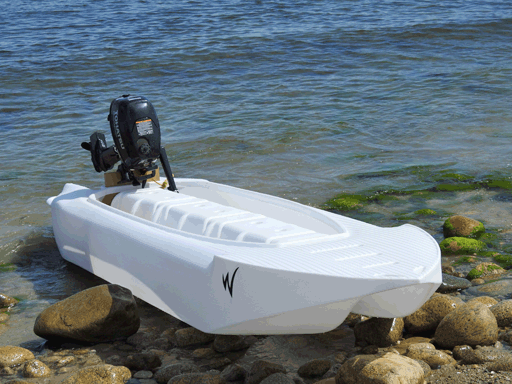
The main advantages of the S4 as a boat for a waterfront property are:
- It is lightweight and portable – barely 100 lbs without the motor. This means that you don’t necessarily need a dock to launch and beach it, and if needed, you can haul it on top of your dock. Moreover, being a car-top boat makes it available for you to take on trips to other places, even without a trailer.
- It’s a kayak, and it paddles well as such, and as a canoe.
- Very shallow draft, even with a motor. For many anglers and paddlers, this feature means everything.
- It’s seaworthy – more than Jon boats and most micro skiffs.
- It’s fast – 17 mph sustained with a powerful outboard motor.
- It’s an all-terrain boat that you can outfit with a surface drive (mud motor)
- It’s comfortable and back-pain free, thanks to its saddle seat that its passengers ride similarly to the way you ride the saddle of high performance personal watercraft (jet-ski), all-terrain vehicles (ATV), and snowmobiles.
- It’s extremely stable – more than Jon boats and micro skiffs of similar size, which makes it great for fishing. It even features a front deck for casting.
- Plenty of storage space and good carrying capacity – The S4 can carry a payload of 600 lbs, which means a powerful portable outboard motor and three passengers. The on board storage space it provides is equivalent to the storage space offered by good size skiffs and Jon boats.
- It’s durable, thanks to the fact that it’s rotomolded from High Density Polyethylene (HDPE), and you can carry and launch it over rocks.
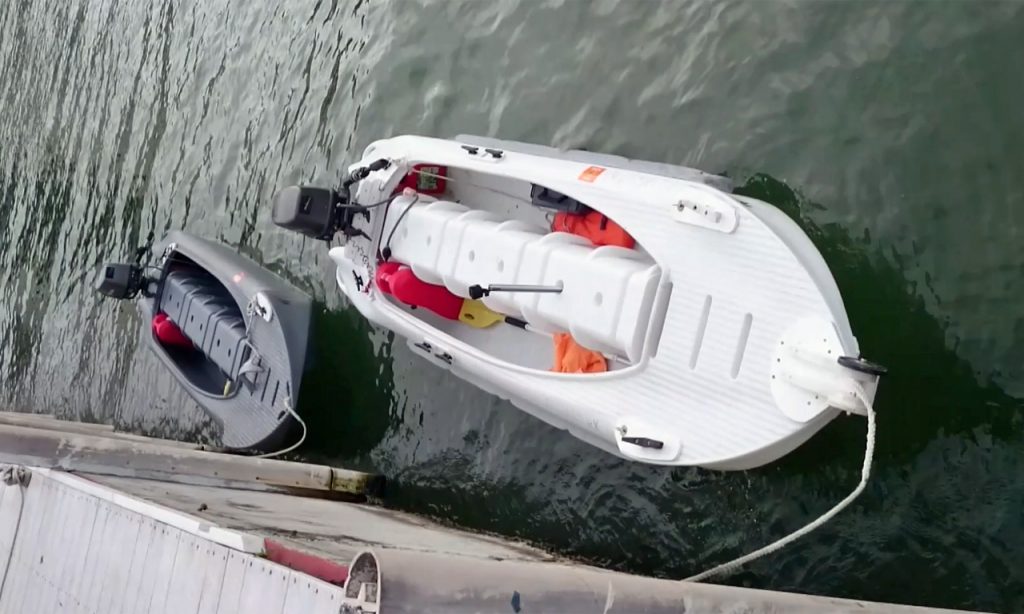
Do you have any questions about this article?


